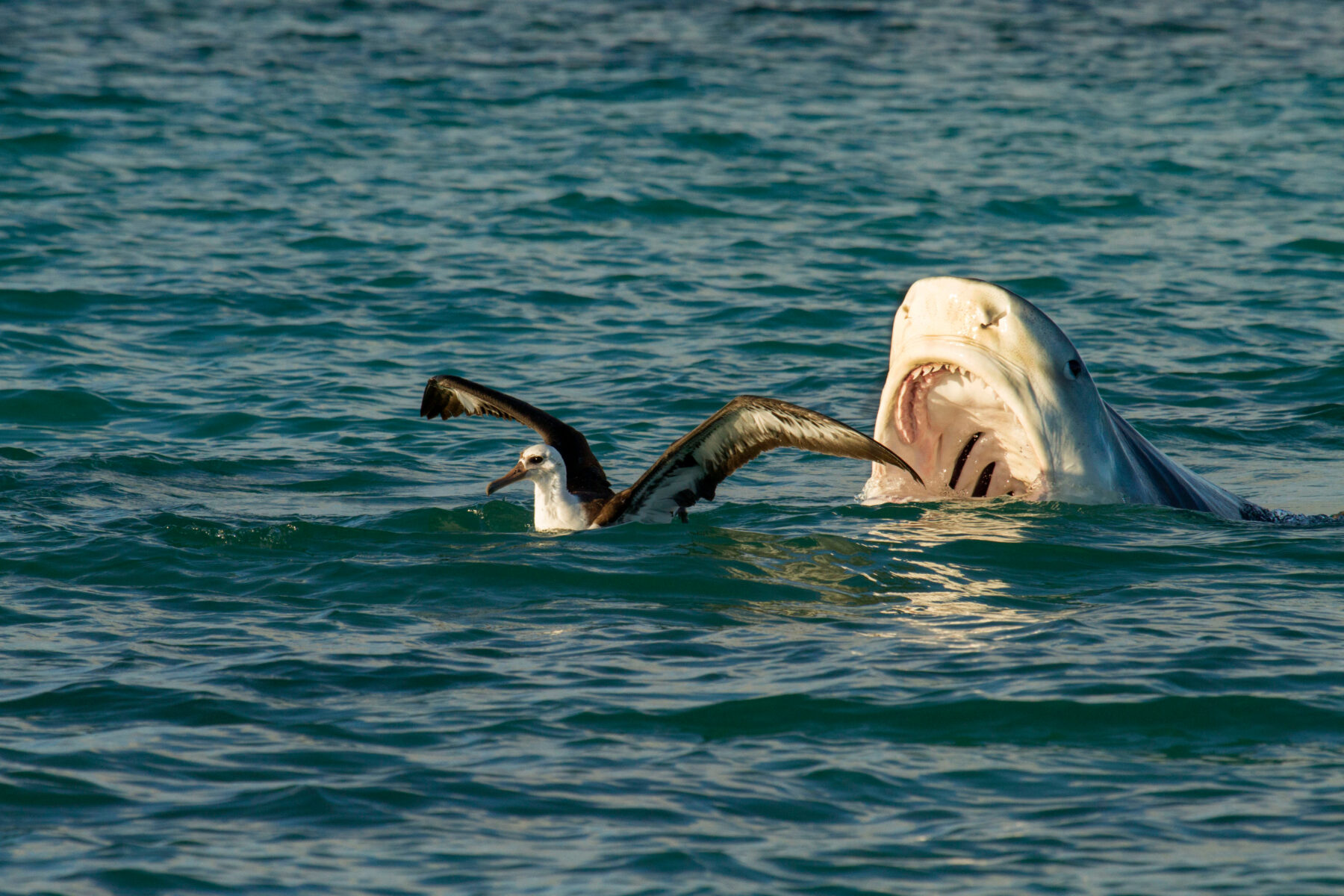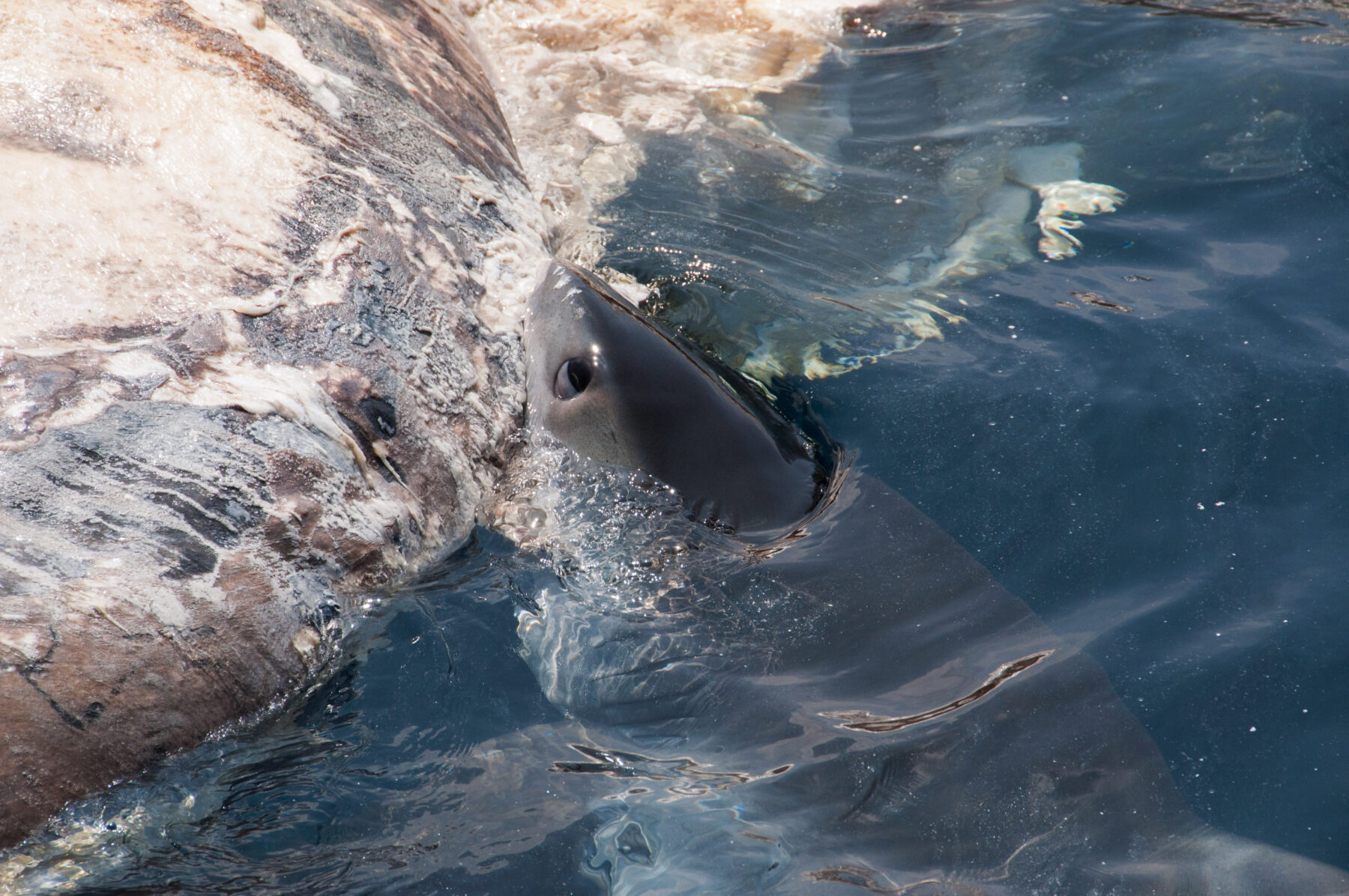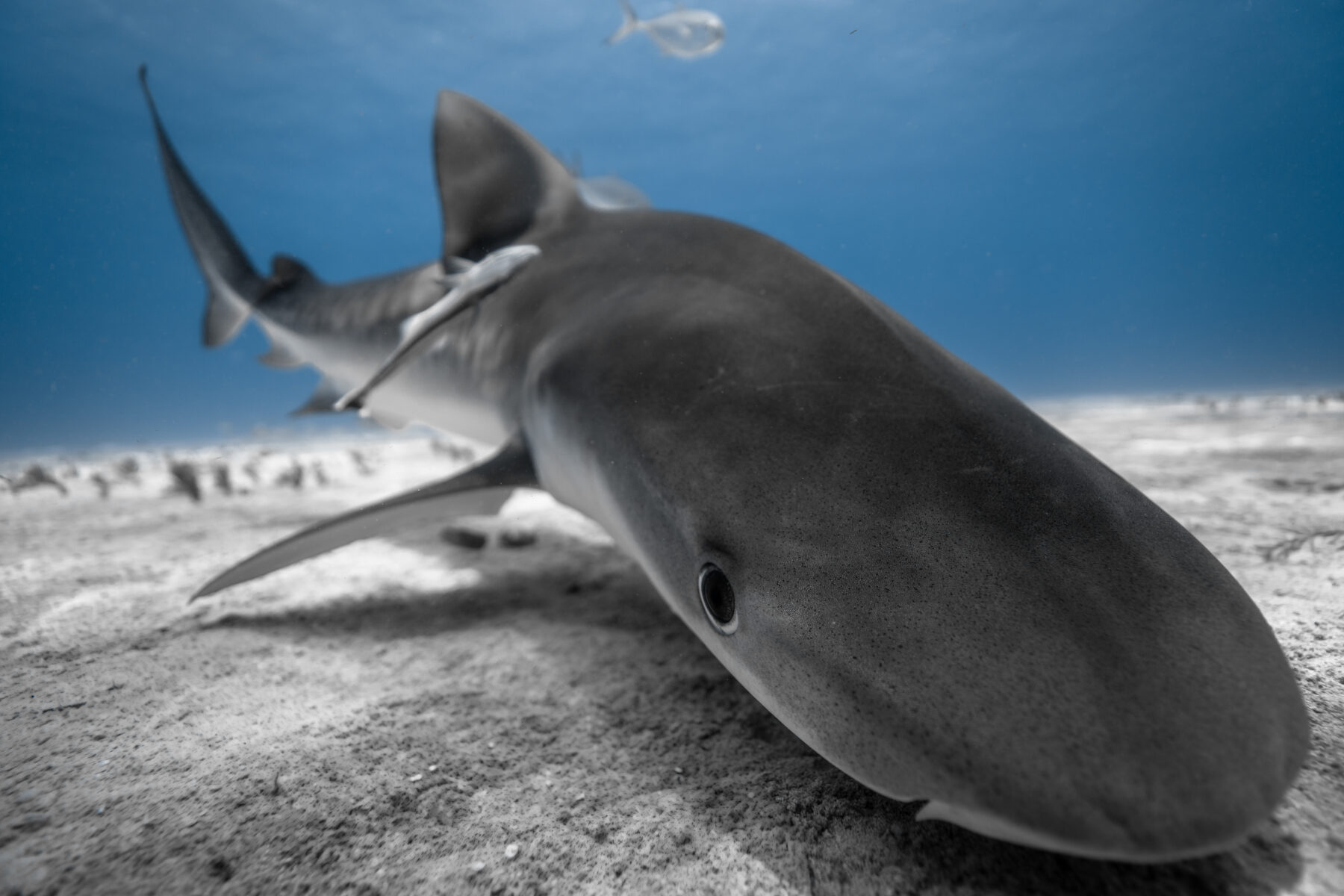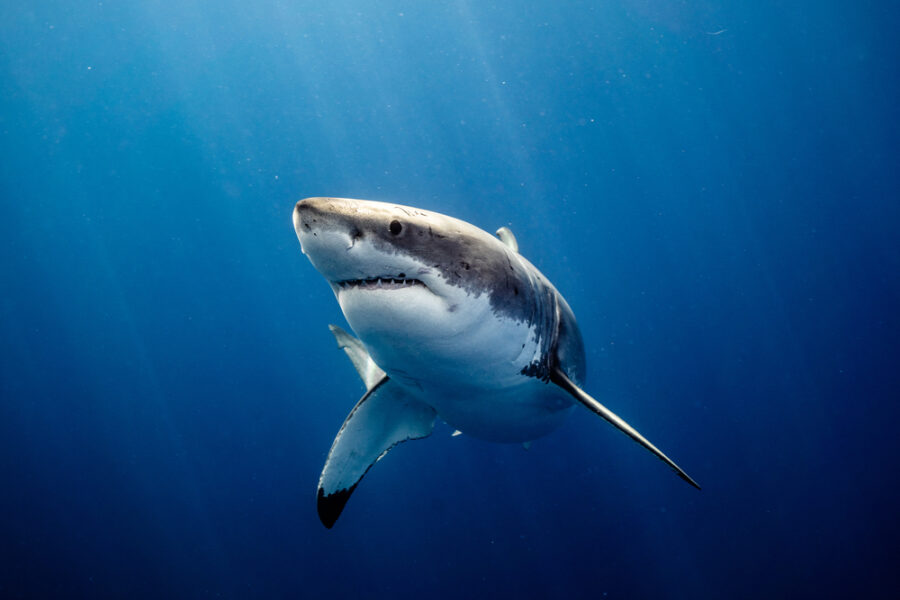Tiger sharks: Trash cans of the sea, or clever opportunists?

Bec Crew
Bec Crew

The ocean’s very own bin chicken, the tiger shark has a reputation for eating anything and everything.
Shrewd opportunists, they’ll eat the regular stuff (fish, crabs, rays, porpoises, seabirds) and the not-so-regular stuff (sparrows, woodpeckers, doves, rats, cats, dogs, sheep and horses). They’ll also eat the very ill-advised stuff (pieces of boats and ships, tyres, oil cans, clothing and books).
In fact, these sharks will hunt and devour prey just for fun – even when they’re not hungry.

The tiger shark (Galeocerdo cuvier) isn’t fussy, but that’s a big reason why it’s so successful. Because why spend your life endlessly chasing prey when there’s a perfectly good turtle carcass just waiting to be snacked on?
Tiger sharks are found around the world in tropical and subtropical waters. In Australian waters, their range includes Windy Harbour in the south-west of Western Australia, and around the northern and north-eastern coasts of Australia down as far as southern New South Wales.
A particularly important place for them is around Raine Island, on the outer edges of the Great Barrier Reef, which just so happens to be the world’s largest green sea turtle nesting site.

Between October and April, thousands of female turtles migrate to Raine Island to lay their eggs. Researchers have recorded more than 64,000 turtles in one nesting season alone, with up to 20,000 nesting on the beach at once.
These turtles travel from feeding grounds in Indonesia, New Guinea, Vanuatu, New Caledonia and within Australian waters to nest at Raine Island, migrating for distances of up to 2,600km.
No wonder they’re exhausted.
Many turtles don’t make it, which of course provides a good supply of carcasses for our selachian friends. Rather than tiring themselves out from chasing after healthy sea turtles – and having to negotiate tough shells and powerful flippers – tiger sharks have learned to be patient, following the scent of decaying carcasses for an effortless meal.
Stretching up to 6m in length and weighing in at a hefty 520kg (equivalent to a large grand piano), tiger sharks have a reputation for being aggressive. But that’s not where their name comes from. Their name refers to the dark, vertical stripes that run down their sides and back as juveniles – a beautiful feature that sadly fades as the shark ages.

In terms of reproduction, tiger sharks give birth to live young about once every two years, and each litter contains up to 82 pups. Eighty-two kids simultaneously. Can you imagine?
They probably don’t get attached to many of them, though, as the reason they have so many is because many don’t make it to adulthood. Which is tough for the species, because tiger shark females aren’t reproductively mature until about eight years old, and gestation can take up to 16 months – so it takes a long time for a female to start contributing to a local population.
But for the pups that do survive, there’s a wide open ocean full of echidnas… I mean, turtle carcasses to feed on.


